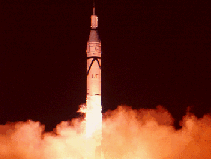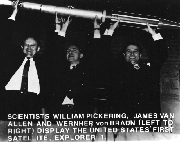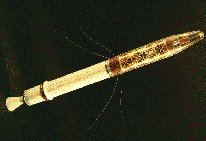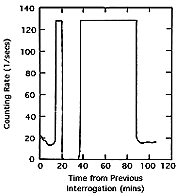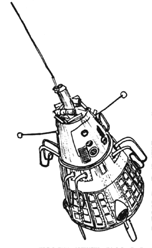|
[an error occurred while processing this directive]
#11. Explorers 1 and 3
|
(Files in red–history) |
The spacecraft, named Explorer 1, was launched 31 January 1958 and was designed and built by a group of scientists from the University of Iowa, led by James Van Allen. That group had been previously credited with the first observation of auroral electrons from a rocket; incidentally, the idea of the IGY itself started in 1950 at a dinner party at Van Allen's home (at the time, near Washington).
|
Discovery of the Radiation Belt
Explorer 2 failed to orbit, but Explorer 3, launched March 26, was successful, and it did carry a tape recorder. Its trace of the number of counts was normal at low altitudes, then it rose rapidly to fill the transmittable limit of 128, but at the highest level it fell to zero. Laboratory experiments with similar counters confirmed that this was characteristic of extremely high counting rates, when the counter discharged so frequently that it could not properly recover between counts, yielding pulses too small to trigger the counting circuit.
Exploring FurtherA web site with a picture of the Explorer-1 rocket and with links. For more on the story of Explorer 1 and Sputnik, click here. Click here for a web page devoted to James Van Allen, and here for his autobiography. A commemorative article "Discovering Earth's Radiation Belts: Remembering Explorer 1 and 3" by Frank McDonald and John Naugle appeared in "Eos" 89, 23 September 2008, p. 361-3. |
Next Stop: #12. The Radiation Belts
- Back to the Index Page
Timeline Expanded timeline Glossary
Author and Curator: Dr. David P. Stern
Mail to Dr.Stern: education("at" symbol)phy6.org
Co-author: Dr. Mauricio Peredo
Spanish translation by J. Méndez
Re-formatted 3-11-2006
